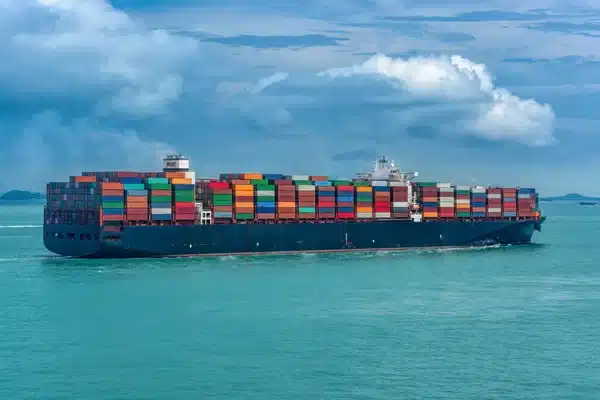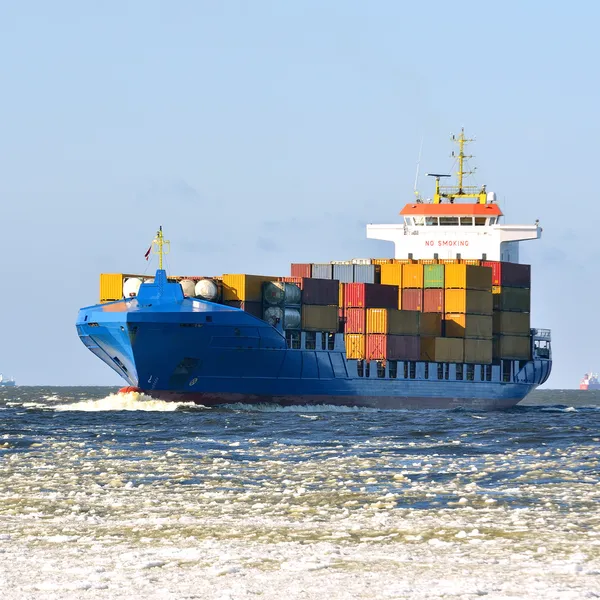Shipping goods from China to the UAE is a critical part of the supply chain for many businesses, whether you are shipping consumer products, machinery, or raw materials. The trade between China and the UAE has grown significantly over the years, driven by economic partnerships, industrial development, and the expanding consumer market in the UAE. Understanding the shipping process, including the costs involved, the different methods available, and the factors influencing these costs, is crucial for businesses of all sizes.
Freight shipping from China to the UAE can be complex, as it involves multiple steps, including choosing the right shipping method, complying with customs regulations, and understanding the logistics costs. Businesses must choose between different shipping options—such as sea freight for cost-effectiveness, air freight for speed, or door-to-door services for convenience—to ensure they get the best balance of time and budget. This guide provides a comprehensive overview of the shipping costs, different options, and practical tips to make the process smoother and more efficient. Understanding the cost structure involved in freight shipping is crucial for budgeting and for making informed decisions. This guide provides a detailed overview of the different costs involved in shipping from China to the UAE, including sea freight, air freight, and door-to-door services, while incorporating essential industry keywords such as specific ports and airports to enhance relevance.

Table of Contents
Factors Affecting Shipping Costs
Shipping costs from China to the UAE can vary significantly based on several factors, including:
Shipping Method: The choice between sea freight, air freight, or door-to-door shipping directly affects the cost. Air freight is the fastest but most expensive option, whereas sea freight is more economical for bulk shipments.
Container Size and Type: For sea freight, the cost depends on the type and size of the container. Standard containers are typically 20-foot and 40-foot in size. Special containers, such as refrigerated or open-top containers, come at an additional cost.
Weight and Volume: Shipping costs are often calculated based on the weight or volume of the goods. Higher weight or larger volume usually results in higher shipping costs.
Customs Duties and Taxes: The UAE imposes customs duties on imported goods, typically calculated as a percentage of the goods’ value. Understanding the customs duty rate for your product is essential for estimating total shipping costs.
Seasonality: Shipping costs can fluctuate during peak seasons, such as holidays and Chinese New Year, when demand for freight services is higher.
Fuel Surcharges: Changes in fuel prices can also impact the cost of shipping, especially for air and sea freight.
How Much Does Sea Freight from China to the UAE Cost?
Sea freight is the most common shipping method for transporting goods from China to the UAE, especially for large and bulky shipments. The cost of sea freight is influenced by the container size, port fees, and any additional services required. Below is a detailed price breakdown for shipping to various ports in the UAE.
Estimated Sea Freight Costs by Port
| Port of Origin (China) | 20ft Container Cost (USD) | 40ft Container Cost (USD) |
|---|---|---|
| How much does it cost to ship a container from Shanghai China to UAE. | $900 – $1,500 | $1,400 – $2,400 |
| How much does it cost to ship a container from Shenzhen China to UAE. | $800 – $1,400 | $1,500 – $2,700 |
| How much does it cost to ship a container from Ningbo-Zhoushan China to UAE. | $1,000 – $1,600 | $1,700 – $2,900 |
| How much does it cost to ship a container from Guangzhou China to UAE. | $950 – $1,500 | $1,600 – $2,700 |
| How much does it cost to ship a container from Qingdao China to UAE | $1,050 – $1,700 | $1,800 – $3,000 |
| How much does it cost to ship a container from Tianjin China to UAE | $900 – $1,500 | $1,900 – $3,200 |
| How much does it cost to ship a container from Xiamen China to UAE | $1,300 – $2,100 | $1,800 – $3,000 |
| How much does it cost to ship a container from Dalian China to UAE | $1,000 – $1,600 | $1,700 – $2,900 |
Types of Sea Freight:
Full Container Load (FCL): FCL is ideal for businesses that need to transport large quantities of goods. You book an entire container, giving you control over the packing and reducing the risk of damage.
Less than Container Load (LCL): LCL is suitable for smaller shipments that do not require a full container. You share the container space with other shippers, which makes it a more economical option for low-volume shipments.
Estimated Cost for LCL: $60 – $120 per CBM (Cubic Meter)
Transit Time: Sea freight from China to the UAE typically takes between 20 to 30 days, depending on the specific ports and shipping routes.

How Much Does Air Freight from China to the UAE Cost?
Air freight is the fastest way to ship goods from China to the UAE, making it ideal for time-sensitive or high-value shipments. Below is an estimated cost breakdown for air freight between key airports in China and the UAE.
Estimated Air Freight Costs by Airport
| Airport of Origin (China) | Cost per kg (USD) | |
| $3 – $6 | |
| $3.5 – $6.5 | |
| $4 – $7 | |
| $4.5 – $7 | |
| $5 – $8 |
Transit Time: Air freight takes approximately 5 to 7 days, depending on the specific airports and any potential delays.
Door-to-Door Shipping Costs
Door-to-door shipping is a convenient option for businesses that want an end-to-end solution without having to manage the logistics of getting goods to and from ports or airports. This service includes pickup from the supplier in China, shipping, customs clearance, and delivery to the final destination in the UAE.
Estimated Door-to-Door Shipping Costs
| Shipping Method | Cost (USD) |
| Sea Freight DDP (20ft) | $1,600 – $2,800 per 20ft container |
| Sea Freight DDP (40ft) | $2,000 – $3,200 per 40ft container |
| Air Freight DDP | $6 – $9 per kg |
Benefits of Door-to-Door Shipping:
Simplified Process: The freight forwarder handles all logistics, from pickup to delivery.
Cost Certainty: With DDP terms, the seller takes responsibility for duties and taxes, providing a more predictable cost structure.
Customs Duties and Taxes
The UAE imposes a standard customs duty of 5% on most imported goods, calculated based on the CIF value (Cost, Insurance, and Freight). Certain goods may be exempt or subject to different rates depending on the nature of the product.
VAT: The UAE also charges a Value Added Tax (VAT) of 5% on imported goods, which is calculated on the total landed cost, including the customs duty.
To accurately estimate customs duties and taxes, it’s essential to know the HS code (Harmonized System code) for your product, as different products have different duty rates.
Tips to Reduce Shipping Costs
Plan Shipments During Non-Peak Seasons: Avoid shipping during peak seasons to take advantage of lower rates.
Consolidate Shipments: Consolidate multiple smaller shipments into one larger shipment to save on LCL or air freight costs.
Use FCL for Large Volumes: If you have enough goods, opt for FCL to reduce the per-unit shipping cost.
Partner with a Reliable Freight Forwarder: Working with an experienced freight forwarder can help you navigate complex shipping routes and negotiate better rates.
Consider DDP Shipping: Opt for DDP terms to simplify the process, as the seller handles all duties, taxes, and customs clearance, providing a hassle-free experience.

Frequently Asked Questions (FAQs)
Q1: How long does it take to ship goods from China to the UAE?
Sea freight takes approximately 20 to 30 days, while air freight takes 5 to 7 days, depending on the specific routes.
Q2: What is the best shipping method for urgent shipments?
Air freight is the best option for urgent or time-sensitive shipments, as it offers the fastest transit times.
Q3: What documents are required for customs clearance in the UAE?
The key documents include the commercial invoice, bill of lading or airway bill, packing list, and certificate of origin.
Q4: How can I reduce shipping costs?
To reduce shipping costs, consider consolidating shipments, using FCL for larger volumes, planning shipments during non-peak times, and working with an experienced freight forwarder.
Q5: What are the benefits of using DDP shipping terms?
DDP shipping terms simplify the import process by making the seller responsible for all duties, taxes, and customs clearance, ensuring a smooth experience for the buyer.
Conclusion
Shipping from China to the UAE involves multiple factors that influence the overall cost, including the shipping method, container size, weight, and customs duties. By understanding these factors and choosing the right shipping strategy—whether sea freight, air freight, or door-to-door services—you can optimize your supply chain and manage costs effectively. Working with a reliable freight forwarder and considering DDP shipping terms can further simplify the process, ensuring a seamless experience from start to finish. For expert assistance in managing your shipments, contact our team at Tonlexing for tailored logistics solutions to meet your business needs.


